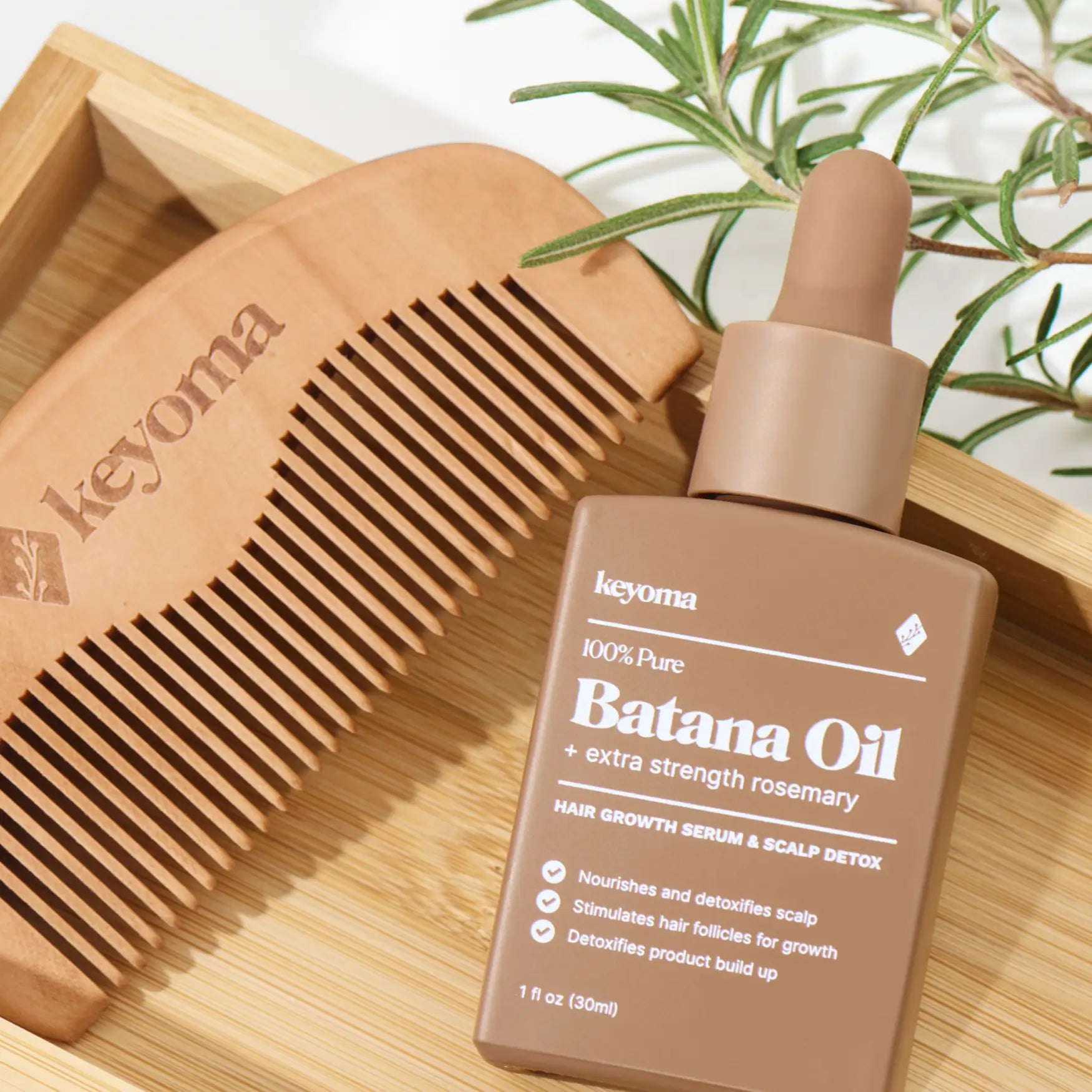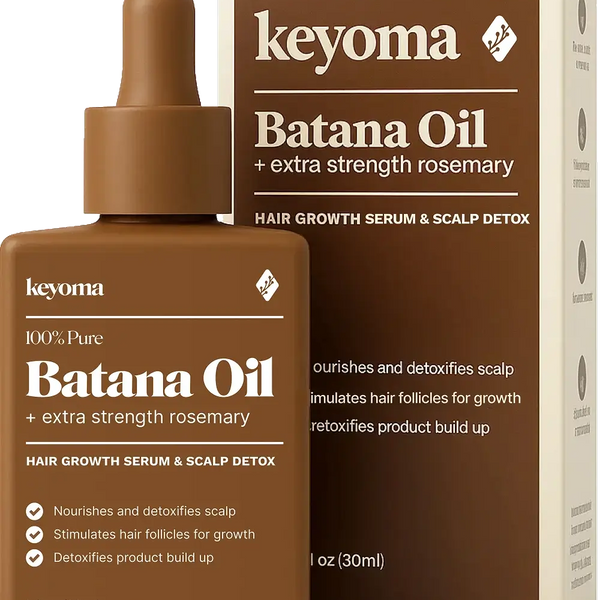In this article
“Can I get my hair back?” That’s likely on your mind once you’ve paused the pulling. With patience and gentle care, hair can restart its growth cycle. For some people, regrowth takes more time and may be trickier.
Repeated pulling over months or years does more than take out strands. The behavior can injure the hair shaft and the follicle itself. These structures often need recovery time and sometimes extra support. In severe cases, the damage can be lasting, leaving areas that don’t regrow.
The encouraging part is that many people healing from trichotillomania do see new growth. Whether you’re just beginning recovery or hoping to speed things along, you can take steps that put your hair in its best possible condition and nudge regrowth.
Key Takeaways
-
Repeated pulling injures hair shafts and follicles, and severe damage can cause lasting loss.
-
Many people see regrowth after stopping pulling, though timelines vary and patience matters.
-
Trichotillomania often starts between ages ten and thirteen and commonly targets scalp hair.
-
Cognitive behavioral therapy with habit reversal training helps replace pulling with alternative actions.
What Trichotillomania Is
Trichotillomania, sometimes called hair pulling disorder, TTM, or trich, is a mental health condition where you pull hair from the scalp, eyebrows, lashes, or other body areas. Stopping can feel nearly impossible, and pulling often releases built-up tension or stress.
There isn’t a single known cause of trichotillomania. Many experts think it may relate to chemical imbalance, hormonal shifts, and genetics. It can also escalate over time — using pulling to cope with stress can make urges stronger with repetition.
Trichotillomania usually begins early, often between ages 10 and 13 years old.It’s important to gain control as soon as you can, since earlier diagnosis is linked with better outcomes. There are risks too — besides hair loss, you can develop skin infections, hair accumulation in the digestive tract, and worsening mental health symptoms.
Symptoms of Trichotillomania
The core symptom is repeated hair pulling that’s hard to control. The urge to pull can rise and fall.
Common Symptoms of Trichotillomania
Researchers observed that about 70 percent of people with trichotillomania pull from the scalp. Eyebrows and the pubic region are the next most common sites.
Other symptoms include:
-
Hair loss. You may see bald patches, uneven regrowth, or thinning areas.
-
Skin irritation. Pulling can cause redness and soreness. Using tools like scissors or tweezers can lead to deeper, more focused, or repetitive pulling, raising the risk of irritation and injury.
-
Gastrointestinal (GI) issues. Up to 20 percent of people with trichotillomania eat the hair they pull, a behavior called trichophagia. Sometimes this leads to trichobezoars (hair balls) that may block the intestines.
Trichotillomania can also impact mental well-being and daily life, contributing to anxiety, low self-esteem, or emotional distress.
Is It Possible to Stop Trichotillomania?
Because trichotillomania is a mental health condition, it’s rarely something you can just turn off. Unlearning the pulling habit often takes time and consistent effort. If you’re living with trichotillomania, talk with your GP for guidance and support. The faster you begin treatment, the lower the chance of long-term damage.
Adopt Healthier Coping Mechanisms
The first step in supporting hair growth is managing trichotillomania by adopting healthier coping skills. Searching for the “best” hair growth products won’t help if you still pull.
Naturally, begin by reducing or stopping the behavior. Easing out of the habit makes every growth effort more effective.
Some of the most helpful strategies for trichotillomania include:
-
Mindfulness practices like yoga and meditation to improve stress management.
-
Regular exercise to boost endorphins (the “feel-good” hormones) and lift mood naturally.
-
Healthy distractions such as knitting, drawing, or using a stress ball to keep hands busy.
If you still find it hard to manage trichotillomania, consider behavioral therapy. Therapists often use cognitive behavioral therapy, especially habit reversal training, to help you build healthier responses to urges.
You can also join trichotillomania support groups to get encouragement and practical tips on coping and hair growth.
Tips to Support Hair Regrowth After Trichotillomania
If you’ve noticed hair loss because of trichotillomania, you can try a few approaches that encourage growth.

Adopt a Consistent Daily Routine
Stress and anxiety can fuel trichotillomania, so reducing them matters. Building a steady daily routine can ease distress, which in turn helps you resist the urge to pull.
You might wake a little earlier for quiet time in the morning, or add daily walks or simple wellness practices to calm your mind. Anything that slows your pace can support your mental health.
Start Daily Supplements for Hair Regrowth
To support strong, healthy regrowth, some people use skin and hair supplements. These can aid growth and strengthen hair from the root, especially if you have gaps in key minerals.
Use Essential Hair Oils on Affected Areas
Many people use hair oils, such as rosemary oil, which are said to stimulate hair growth. Applying a small amount on the affected areas each day may help your regrowth efforts.
Keep Hands Busy With Engaging Activities
Keeping your hands busy reduces the temptation to pull and create more loss. Whether you try fidget tools or get into a sport, any activity that occupies your hands and attention can protect new growth.
Consider Cognitive Behavioral Therapy (CBT)
Cognitive Behavioural Therapy focuses on how you feel and behave. It helps you identify moments that trigger pulling and teaches you to swap the habit for another action.
There is also habit reversal training (HRT), an effective therapy that works much like CBT by finding triggers of trichotillomania and replacing them.
Explore Hair Loss Treatment Options
You can also explore hair loss treatments. Popular options for men include Finasteride and Dutasteride. Minoxidil (Rogaine) is used by both men and women. These treatments aim to promote growth, but they won’t help if you continue to pull. It’s important to curb pulling if you plan to use medications for hair loss.
Recover From Trichotillomania Hair Loss with Keyoma
Treat regrowth as a behavior project first, a hair project second. Watch risks, not just gaps in coverage. If an urge spikes, then switch to a planned two-hand task and stay with it until the wave passes. Get step-by-step coping tools and gentle regrowth checklists in the Keyoma Hair Care blog.
Featured Product
100% Pure Batana Oil + Rosemary









